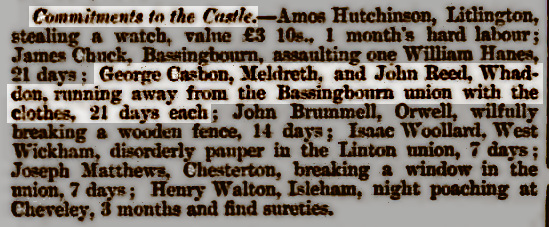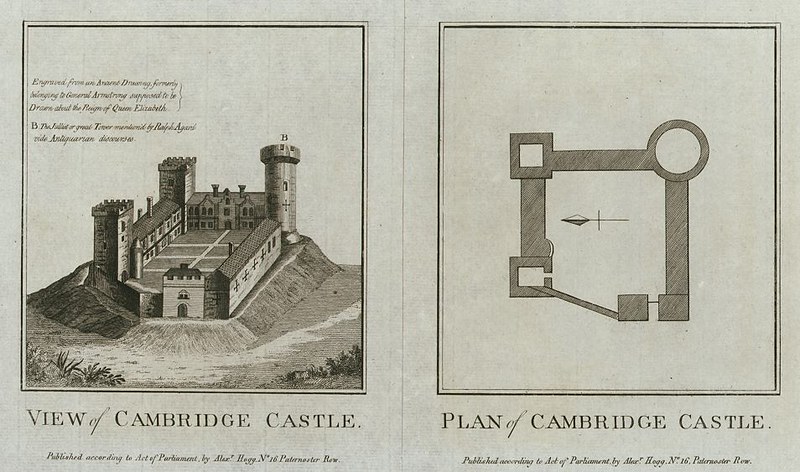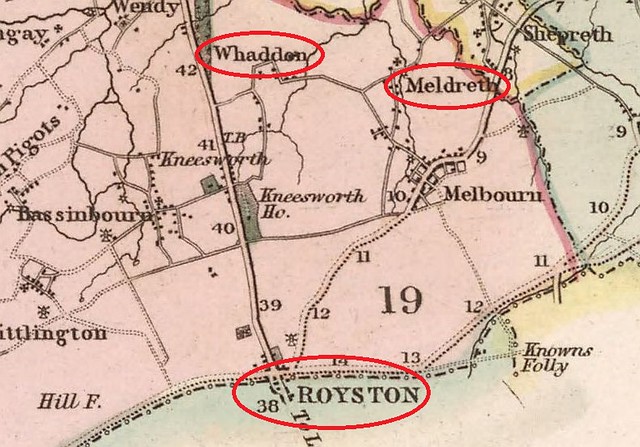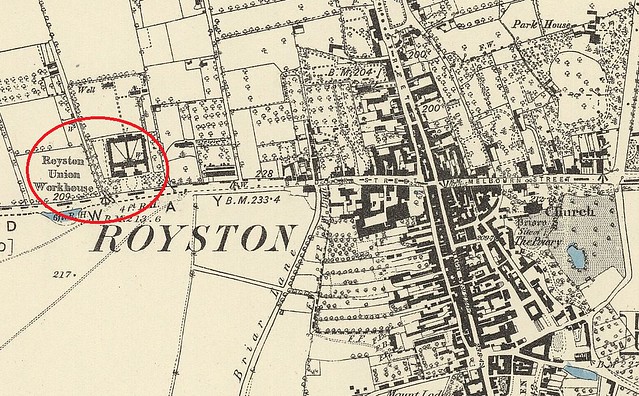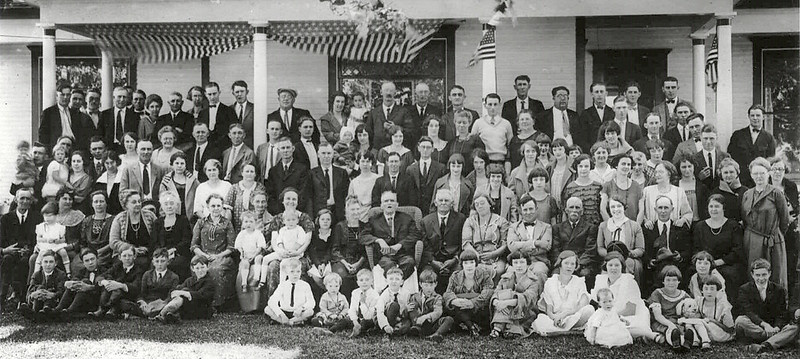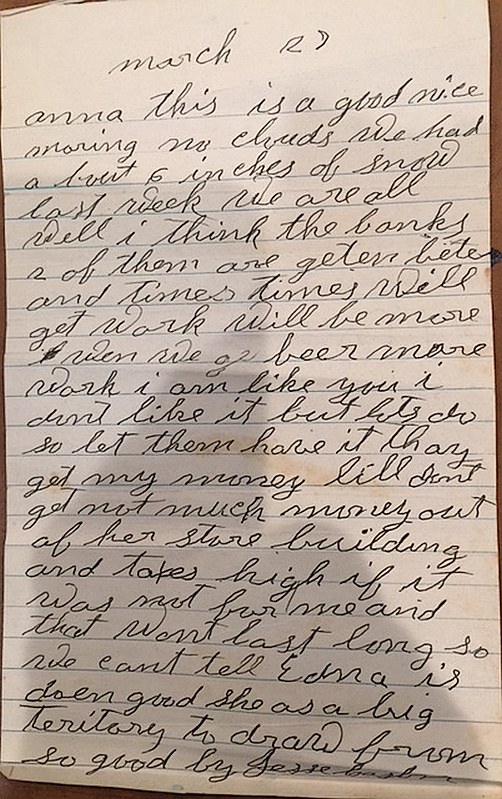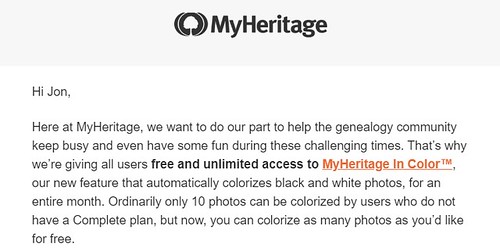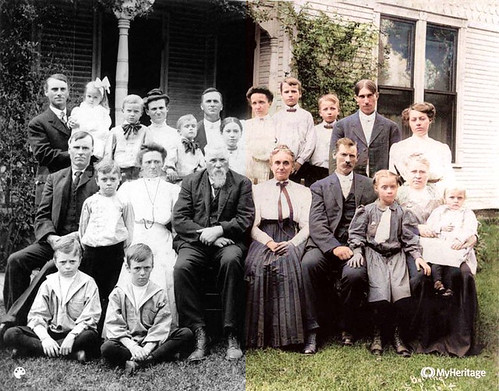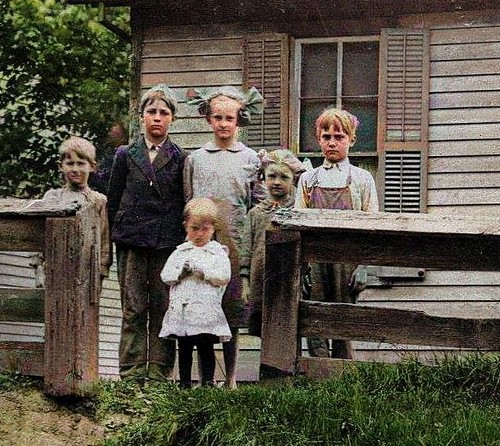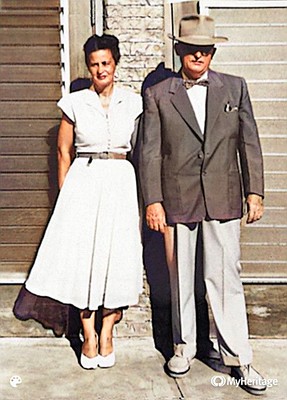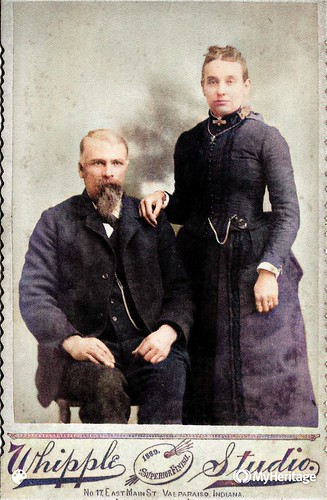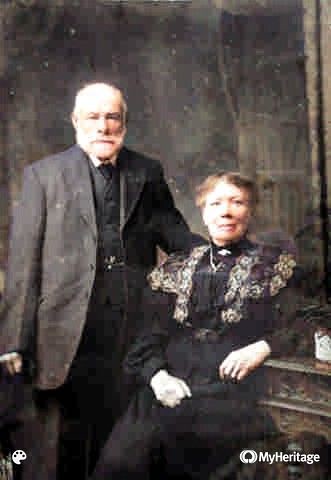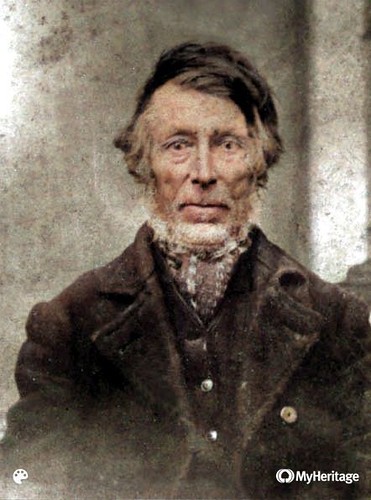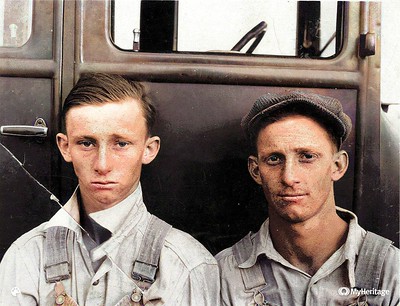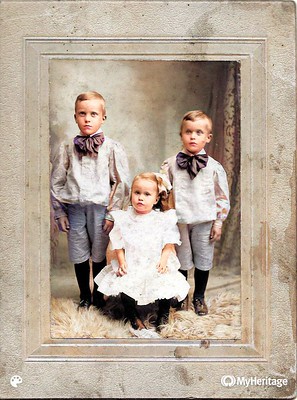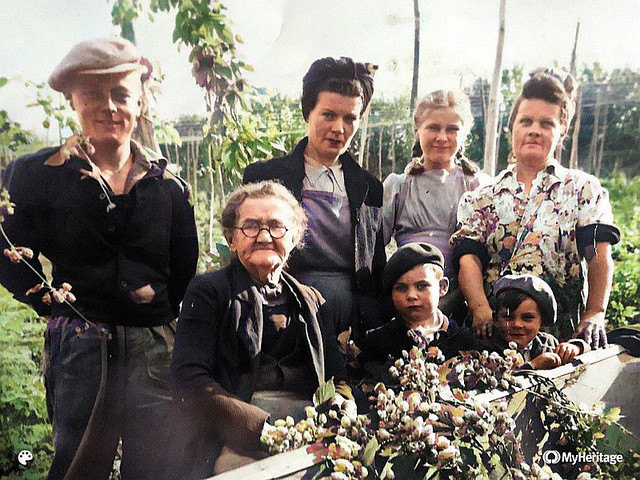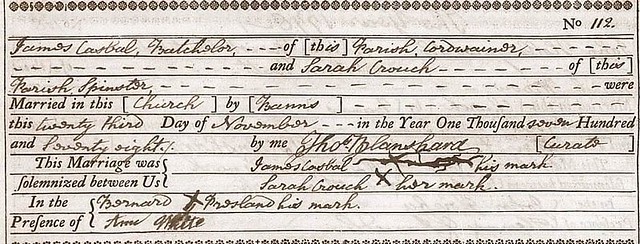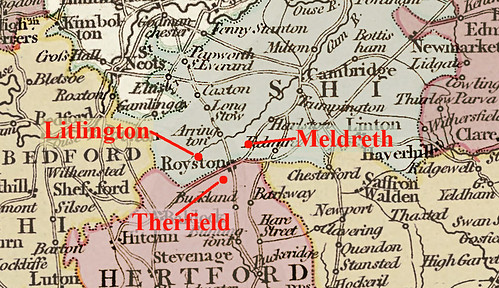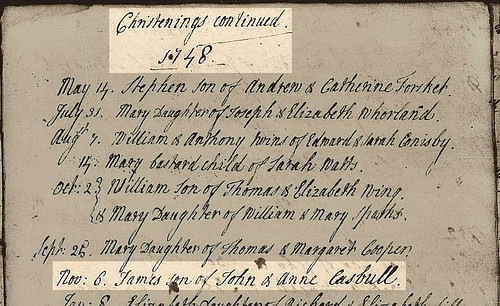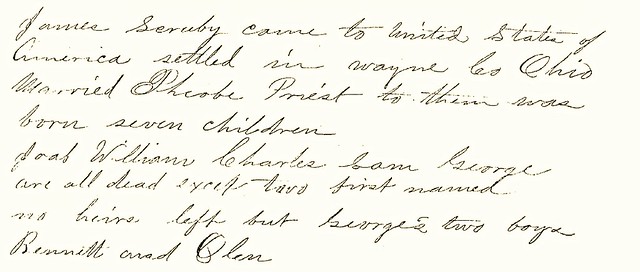Today’s post starts with a record I recently found on Ancestry. The record comes from a register of admissions and discharges from the Shoreditch workhouse in London.[1]
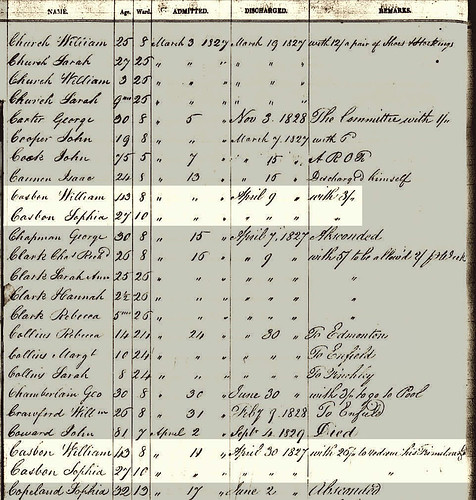
Detail from an alphabetical register of admissions and discharges, Shoreditch workhouse, 1827, showing entries for William and Sophia Casbon, admitted on 13 March and again on 11 April. (Click on image to enlarge)
The record shows that William Casbon, age 43, and Sophia Casbon, age 27, were admitted to the workhouse 13 March 1827 and discharged 9 April “with 3/ [shillings?].” They were admitted again from 11 to 30 April 1827, and this time discharged “with 25/ to redeem his Furniture [or Furnishing?].” They were admitted to wards 8 and 10, presumably men’s and women’s wards, respectively.
Who were William and Sophia Casbon and why were they in the Shoreditch workhouse? A marriage record from 1822 shows that William Casbon, a bachelor, married Sophia Phillips, a spinster, in the Parish of St. Matthew, Bethnal Green, London, on 1 December 1822.[2] Bethnal Green is a short distance east of Shoreditch. I know this is the correct couple because of another record presented later in this post.
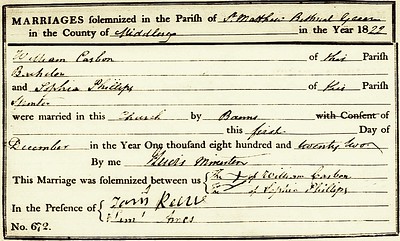
Detail from Register of Marriages, St. Matthew, Bethnal Green, 1822.
Note that William and Sophia each signed with their marks.
Based on the ages written in the workhouse register, William would have been born in about 1784 and Sophia in about 1800. I have an extensive database of baptismal records for Casbon and related surnames throughout England. Baptisms were recorded for William Caseburn in 1780 (Downham, Norfolk), William Casebourn in 1788 (Soham, Cambridgeshire), and William Casbolt in 1789 (Linton, Cambridgeshire), but there is nothing to connect them to William of Shoreditch. The marriage of John Casbon to Elizabeth Toon was recorded at St. Leonard’s Shoreditch in 1783, so it’s possible they were either William’s parents or related to him in some way.[3] There is no evidence that William comes from the Meldreth or Peterborough Casbon lines.
Sophia Phillips was a common name and there are many corresponding baptismal records. Without knowing the names of her parents, it is impossible to tell where or when she was born.
Shoreditch is an ancient suburb of London and is now part of inner London. By the early to mid 1800s, it was mainly a lower and working class area.

Detail of an 1827 map of London; approximate location of Shoreditch is circled; arrow points to St. Leonard’s Church; John & Christopher Greenwood, “Map of London, From an actual Survey made in the Years 1824, 1825 & 1826” (London: Greenwood, Pringle & Co., 1827); digital image, David Rumsey Historical Map Collection (https://davidrumsey.com : accessed 13 Mar 2020); Creative Commons License. (Click on image to enlarge)
Workhouses were institutions designed to support the poor with food, lodging and medical care. While charitable in nature, conditions in the workhouses were often so bad that only the truly desperate would seek admission. “Men, women, children, the infirm, and the able-bodied were housed separately and given very basic and monotonous food such as watery porridge called gruel, or bread and cheese. All inmates had to wear the rough workhouse uniform and sleep in communal dormitories.”[4] Thus, we can infer that William and Sophia were admitted to the workhouse because of difficult circumstances. They would have desired to get out as soon as their situation allowed.
The couple had at least three children. A daughter, Elizabeth, was baptized at the City of London Lying-in Hospital, St. Luke’s Parish, on 26 August 1829.[5] Elizabeth’s burial at St. Leonard Church, Shoreditch, was recorded on 29 July 1831.[6] A son named Joseph or John (both names are used in different records) was born in about December 1832 and died at Shoreditch workhouse one year later.[7] Finally, another son, James, was born at the Shoreditch workhouse on 30 May 1834.[8]
Seven weeks after James was born, Sophia was interviewed at the Shoreditch workhouse and revealed some startling news.[9]
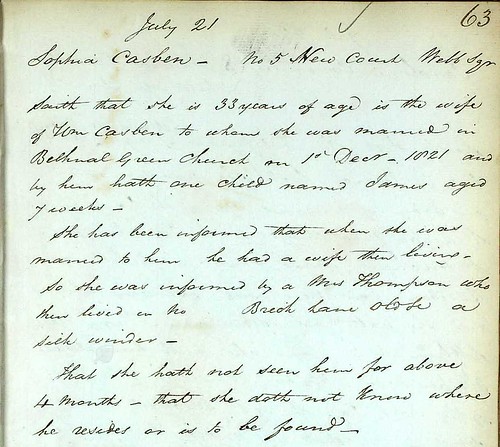
Statement of Sophia Casbon, Shoreditch Poor Law Union, 21 Jul 1834. (Click on image to enlarge)
July 21
Sophia Casben – No 5 New Court Webb Sqr
Saith that she is 33 years of age is the wife
of Wm Casben to whom she was married in
Bethnal Green Church on 1st Decr – 1821 and
by him hath one child named James aged
7 weeks –
She has been informed that when she was
married to him he had a wife then living.
So she was informed by a Mrs Thompson who
then lived in No [blank] Brick Lane above[?] a
silk winder –
That she hath not seen him for above
4 months – that she doth not know where
he resides or is to be found –
So, we learn the terrible news that Sophia has been abandoned by her husband and that he married her when he was already married to another woman.
There is a marriage record of William Casbourn to Margaret Black at St. James Church, Westminster in May 1817[10] and records of children born to this marriage, but there is insufficient evidence to prove that he is the man who later married Sophia. It is not possible to positively identify William through later census or death records. Thus, we lose track of him at Sophia’s last sighting in early 1834.
I’ve drawn up a chronology of this family’s story as far as I’ve been able to trace it.
- About 1784: William Casbon is born, location unknown
- About 1800: Sophia Phillips is born, location unknown
- 1 December 1822: William and Sophia are married, St. Matthew Church, Bethnal Green
- 13 March 1827: William and Sophia are admitted to Shoreditch workhouse; discharged
9 April
- 11 April 1827: William and Sophia are admitted to Shoreditch workhouse; discharged 30 April
- 26 August 1829: Elizabeth Casbon, daughter of William & Sophia, is baptized, City of London Lying-in Hospital, St. Luke Parish, Westminster
- 29 Jul 1831: Elizabeth is buried, St. Leonard Church, Shoreditch
- About December 1832: Joseph/John Casbon is born (based on age given in subsequent records)
- 26 September 1833: Sophia and Joseph/John Casbon are admitted to Shoreditch workhouse; discharged 5 October[11]
- 10 October 1833: Sophia and Joseph/John Casbon are admitted to Shoreditch workhouse; Joseph/John dies there 7 December and is buried 17 December at St. Leonard Church, Shoreditch; Sophia is discharged 18 December[12]
- 6 January 1834: Sophia is admitted, Shoreditch workhouse; discharged 10 January[13]
- 15 February 1834: Sophia is admitted, Shoreditch workhouse; discharged
24 February[14]
- 24 February 1834: Sophia is readmitted, Shoreditch workhouse; discharged
27 February[15]
- 30 May 1834: James Casbon is born at Shoreditch workhouse (baptized at St. Leonard Church, Shoreditch, 19 June 1834)[16]
- 21 July 1834: Sophia reports her husband missing for the previous four months
- 15 August 1835: Sophia and James are admitted to Shoreditch workhouse; both are transferred to Enfield (poor house for infants) 20 August[17]
- 18 March 1836: Sophia is admitted to Shoreditch workhouse; she dies there 8 July[18]
- 11 July 1836: Sophia is buried, St. Leonard Church, Shoreditch[19]
- 1841 census: James, age 7, is living at Enfield, District Workhouse for Shoreditch Poor Children[20]
- 24 October 1843: James Casbon (age incorrectly listed as 11)—— is admitted to Shoreditch workhouse; unknown discharge date[21]
We can see that from September 1833 until her death on 8 July 1836, Sophia was admitted to the Shoreditch workhouse on multiple occasions. Although the circumstances are not described, we can assume that she must have been desperately poor, and possibly ill for much of this time. Her young son Joseph died at the workhouse in 1833 and her next son, James, was born there five months later. In August 1835, Sophia and James were transferred to the Shoreditch Infant Poor House located at Enfield, about 10 miles north of London. James probably remained there throughout his early childhood. Sophia was probably in the final stages of an illness (tuberculosis?) when she was admitted to the Shoreditch workhouse for the last time in March 1836 and remained there until her death in July.
James, now an orphan, was still in the Children’s workhouse at Enfield when the 1841 census was taken. The last record we have of him is his admission to the Shoreditch workhouse in October 1843. It is unknown what happened to him after that, but as an orphan in Victorian London, it is unlikely that his story had a happy ending.
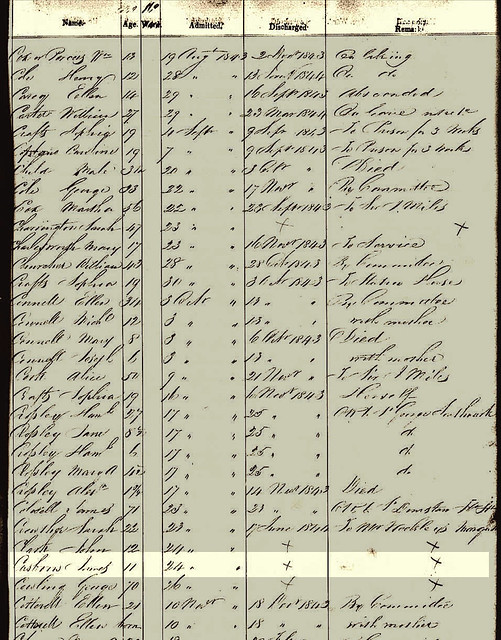
Detail from an alphabetical register of admissions and discharges, Shoreditch workhouse, 1843, showing admission of James Casborn on 24 October; the meaning of the “X” markings under “Discharged” and “Remarks” is unknown. (Click on image to enlarge).
The story of William and Sophia Casbon and their family is a sad addition to Our Casbon Journey. Their tragic tale would have been fitting for a Charles Dickens novel, minus the happy ending.
[1] “London, England, Workhouse Admission and Discharge Records, 1764–1930,” Ancestry (https://www.ancestry.com/search/collections/60391/ : accessed 10 Mar 2020) >Hackney >Shoreditch >Alphabetical List Workhouse Admissions with Subsequent Discharges, 1823–1831 >image 51 of 190; citing London Metropolitan Archives; reference no. P91/LEN/1336.
[2] St. Matthews, Bethnal Green, Register of Marriages, vol 12 [1818–1823], p. 224, no. 672; imaged as “Parish registers for St. Matthew’s Church, Bethal Green, 1745–1900,” browsable images, FamilySearch (https://www.familysearch.org/search/film/008040614?cat=110313 : accessed 10 Mar 2020); Film DGS 8040614, item 4, image 774 of 838.
[3] Westminster, St. Leonard Parish, Register of Marriages [1883–1785], p. 49, no. 145; imaged as “London, England, Church of England Marriages and Banns, 1754–1932, Ancestry (https://www.ancestry.com/search/collections/1623/ : accessed 12 March 2020) > Hackney >St Leonard, Shoreditch >1783–1875 >image 25 of 263; London Metropolitan Archives, P91/LEN/A/01/Ms 7498/13.
[4] Peter Higginbotham, “Introduction,” The Workhouse: story of an institution … (http://workhouses.org.uk/intro/ : accessed 13 Mar 2020).
[5] Middlesex, Saint Luke Parish, City of London Lying in Hospital, Register of baptisms, 1829, p. 25, no. 196; imaged as “London, England, Church of England Births and Baptisms, 1813–1917,” Ancestry (https://www.ancestry.com/search/collections/1558/ : accessed 12 March 2020) > Islington >City of London Lying-In Hospital, City Road, Finsbury >1820–1837 >image 161 of 296; London Metropolitan Archives, DL/T/013/017.
[6] Middlesex, St. Leonard Shoreditch, Register of Burials [1829–1832], p. 237, no. 1893; imaged as “London, England, Church of England Deaths and Burials, 1813–2003,” Ancestry (https://www.ancestry.com/search/collections/1559/ : accessed 12 Mar 2020) >Hackney >St Leonard, Shoreditch >1829–1832 >image 121 of 153; London Metropolitan Archives, P91/LEN/A/012/MS07499/019.
[7] “London, England, Workhouse Admission and Discharge Records, 1764–1930,” >Hackney >Shoreditch >Alphabetical List Workhouse Admissions with Subsequent Discharges, 1832–1836 >image 34 of 173; London Metropolitan Archives, P91/LEN/1337.
[8] “London, England, Workhouse Admission and Discharge Records, 1764–1930,” (same as above), image 36 of 173.
[9] Shoreditch, Westminster, England, Poor Law settlement papers, vol. “H” [Dec 1833–May 1838], p. 63, 21 Jul 1834; imaged as “London, England, Selected Poor Law Removal and Settlement Records,” Ancestry (https://www.ancestry.com/search/collections/2651/ : accessed 10 March 2020) >Shoreditch >Settlement Papers >1833 Dec–1838 May >image 74 of 309; citing London Metropolitan Archives, London; reference no. P91/LEN/1270.
[10] “England, Select Marriages, 1538–1973,” Ancestry (https://www.ancestry.com/search/collections/9852/ : accessed 12 Mar 2020), William Casbon & Sophia Phillips; citing FHL film no. 1042319.
[11] “London, England, Workhouse Admission and Discharge Records, 1764–1930,” Ancestry, same as above, image 34 of 173.
[12] “London, England, Workhouse Admission and Discharge Records, 1764–1930,” (same as above). Also, Middlesex, St. Leonard Shoreditch, Record of Burials [1832–1833], p. 241, no. 1921 (buried as “John Casburn); imaged as “London, England, Church of England Deaths and Burials, 1813–2003,” Ancestry (https://www.ancestry.com/search/collections/1559/ : accessed 12 Mar 2020) >Hackney >St Leonard, Shoreditch >1831–1833 >image 59 of 61; citing London Metropolitan Archives, DL/T/069/049.
[13] “London, England, Workhouse Admission and Discharge Records, 1764–1930,” (same as above) >image 35
of 173.
[14] “London, England, Workhouse Admission and Discharge Records, 1764–1930,” (same as above).
[15] “London, England, Workhouse Admission and Discharge Records, 1764–1930,” (same as above).
[16] “England, Select Births and Christenings, 1538-1975,” database, Ancestry (https://www.ancestry.com/search/collections/9841/ : accessed 12 Mar 2020), entry for James Casben.
[17] “London, England, Workhouse Admission and Discharge Records, 1764–1930,” (same as above), image 38 of 173.
[18] “London, England, Workhouse Admission and Discharge Records, 1764–1930,” (same as above), image 40 of 173.
[19] Middlesex, St. Leonard Shoreditch, Record of Burials [1834–1837], p. 188, no. 1497; Ancestry > Hackney >St Leonard, Shoreditch >1834–1837 >image 95 of 151; citing London Metropolitan Archives, P91/LEN/A/012/MS07499/021.
[20] 1841 England census, Middlesex, Enfield Parish, schedule for public institutions, Workhouse for Shoreditch Poor Children, p.3, line 15 (James Casburn); Ancestry (https://www.ancestry.com/search/collections/8978/ : accessed 12 Mar 2020) >Middlesex Enfield District Workhouse For Shoreditch Poor Children >image 2 of 3; citing The National Archives, HO 107/653/8.
[21] “London, England, Workhouse Admission and Discharge Records, 1764–1930,” Ancestry >Hackney >Shoreditch >Alphabetical List Workhouse Admissions with Subsequent Discharges, 1837–1845 >image 72 of 387; London Metropolitan Archived, P91/LEN/1338.

